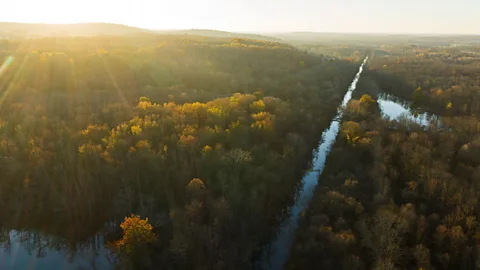The Erie Canal: The manmade waterway that transformed the US
 Getty Images
Getty ImagesTwo hundred years ago, it helped spread people, ideas and goods across the US. Now, it's become a paddler's paradise with more than 700 miles of continuous, navigable waterways.
Inside Lock 11 on the Erie Canal in Amsterdam, New York, the metal-on-metal grinding of gears signalled the closing of the gate behind us. With our teal kayaks lined up along the walls of the lock – an aquatic "lift" that raises or lowers boats on sections of the canal where water levels are unequal – we looked like a befuddled shiver of sharks. "Is it too late to go back">window._taboola = window._taboola || []; _taboola.push({ mode: 'alternating-thumbnails-a', container: 'taboola-below-article', placement: 'Below Article', target_type: 'mix' });
